Extreme Makeover Read online
Begin Reading
Table of Contents
About the Author
Copyright Page
Thank you for buying this
Tom Doherty Associates ebook.
To receive special offers, bonus content,
and info on new releases and other great reads,
sign up for our newsletters.
Or visit us online at
us.macmillan.com/newslettersignup
For email updates on the author, click here.
The author and publisher have provided this e-book to you without Digital Rights Management software (DRM) applied so that you can enjoy reading it on your personal devices. This e-book is for your personal use only. You may not print or post this e-book, or make this e-book publicly available in any way. You may not copy, reproduce, or upload this e-book, other than to read it on one of your personal devices.
Copyright infringement is against the law. If you believe the copy of this e-book you are reading infringes on the author’s copyright, please notify the publisher at: us.macmillanusa.com/piracy.
This book is dedicated to Dan Wells the actor, Dan Wells the race car driver, Dan Wells the snooker player, and Dan Wells the Australian rules footballer. Sometimes you try to find someone else, and all you can find is yourself.
PREFACE
In the early nineteenth century a powerful bacterial neurotoxin was identified in spoiled meat, earning it the name botulinum toxin, or “sausage poison.” The resulting condition, known as botulism, destroys the nervous system’s ability to communicate with muscles, rendering all soft tissues—including the heart and lungs—completely immobile. A mere ninety nanograms can kill a two hundred pound adult in a matter of minutes. It is the most acutely toxic substance known to man. And in 2014, nearly five million beauty-conscious customers voluntarily injected it into their faces.
People don’t like the way they look. More than two-thirds of women in the United States are trying to lose weight; more than half of American teenage girls have quantifiable eating disorders, with symptoms occurring as early as kindergarten. Beauty products and cosmetic surgeries account for more than $426 billion in annual global sales, rising at a rate of nearly 100 percent per year: men implant hair in some places and laser it off in others; some women have their breasts enlarged, others have their breasts reduced; fat is vacuumed out of abdomens; collagen is injected into lips and eyelids; wrinkles are masked and puttied and stretched and poisoned.
In a culture where we can be anything we want, only one thing is certain:
Nobody wants to be themselves.
PART ONE
NEWYEW
1
Thursday, March 22
9:01 A.M.
NewYew headquarters, Manhattan
267 DAYS TO THE END OF THE WORLD
“The yew,” said Carl Montgomery, “is a majestic tree.” He wheezed with the effort of speaking, and paused to take a slow, deep breath from his oxygen tank. “Yggdrasil was a yew,” he said, “the tree that holds up the world.”
They were gathered in an opulent conference room: Carl, the CEO of NewYew, Inc., and all of his executive staff. Lyle Fontanelle, the chief scientist, was always surprised at the sheer ostentatious luxury in this part of the building. The offices had been constructed and furnished in the early days of the company when business was booming, orders were rolling in, and Carl used to say that “people are dying to give us their money!” This was technically true: their sole product at the time had been paclitaxel, a chemotherapy drug, and their customers were all cancer patients. That had been before Lyle was hired, but Carl had often confided to him that the secret to his success had been the ability to treat cancer without curing it: “Sell a cure for something,” he would say, “and you’ve destroyed your own market; sell a treatment, and you’ve gained a customer for life.” Given that his customers’ lives depended quite literally on the treatment he sold them, Carl’s philosophy had been remarkably accurate.
Lyle liked to tell himself that he would not have worked for NewYew during those days—that he would not, when confronted with fabulous wealth, compromise his principles. He was not a mercenary. He was a scientist.
NewYew’s fortunes had changed in the 1990s, when scientists developed a way to synthesize paclitaxel without the need to harvest its namesake tree, the Pacific yew. A simple, unrestricted process meant that more companies could manufacture it; more manufacturers meant wider availability and lower prices; good access and low prices meant that more patients could use it. The patients were happy, the doctors were happy, even the environmentalists were happy because the Pacific yew was no longer in danger.
Carl Montgomery had not been happy.
Without a monopoly to sustain it, NewYew suffered a huge financial hit and was forced to rebuild itself; they had the equipment and the infrastructure to manufacture consumer chemicals, so they simply repurposed them from chemotherapy to cosmetics. They recruited Lyle, an up-and-coming chemist from Avon, and got to work. The only real difference, as far as Carl was concerned, was that now his lobby portraits were supermodels instead of little bald children—so, if anything, the offices looked even nicer than before.
As with most evolutions, this one had produced a number of vestigial appendages—holdovers from the old company that didn’t really apply anymore, such as the name of the company and the tagline “The Healing Power of Yew™.” Carl even went so far as to insist that the Pacific yew be included in their cosmetics formulas, though his executives fought him on it every time. On the morning of March 22, Lyle Fontanelle rolled his eyes and prepared to have the argument again.
“Yggdrasil was an ash,” said Lyle. “I looked it up.”
“And we can’t use yew in a hand lotion,” said the lawyer, a man named Sunny Frye. His real name was Sun-He, and he was Korean; Lyle had been working in makeup for so long, he could pinpoint a face’s origin with uncanny accuracy. Sunny continued patiently: “The yew tree has no moisturizing or antiaging properties whatsoever. We’ve gone over this before. It adds nothing to the product.”
“So don’t use very much,” said Carl, virtually motionless in his chair. It was an overstuffed office chair of soft black leather, blending deliciously with the rich brown mahogany of the conference table, and Carl rarely ever moved from it—or, truth be told, in it. He was seventy-nine years old, long past retirement age, and in Lyle’s opinion he had no business trying to run the company. On the other hand, Lyle had to admit that the alternative was probably worse: the next in line of succession for the position of CEO was the company president, Jeffrey Montgomery. He was Carl’s son, and almost willfully useless.
Carl sat unmoving in his chair. “We don’t need to use very much yew, just enough to put it on the label.”
The room full of executives sighed as politely as they could. There were four of them (not counting Jeffrey, who was playing games on his phone in the corner): the vice president of finance, the vice president of marketing, the chief legal counsel, and, of course, the chief scientist. Lyle had long harbored the secret dream of changing his business cards to say “chief science officer,” but for nearly ten years and counting he’d been too afraid to actually do it. He wasn’t sure which was scarier—being mocked for the Star Trek reference, or realizing that nobody cared what it said on his business cards.
Carl plunged onward, feebly waving a wrinkled hand for emphasis. “The yew is a glorious tree, and our customers associate it with health! We treated cancer for thirty-five years with the yew tree, can’t we leverage that somehow?”
“It would be a brilliant marketing move,” said Kerry White, leaning forward eagerly. He had been hired as vice president of marketing only a few months previously, so this conversation was relatively
new to him. “Think of the commercials: ‘The company that saved your life is going to save your skin.’”
“We ran that campaign four years ago,” said the VP of finance, a skeletal woman named Cynthia Mummer. “It didn’t play.”
“It didn’t play,” said Carl, “because we didn’t have yew in the products!”
“Okay,” said Lyle, “can we…” He wanted to show off his newest idea, and struggled to find a good segue. “Can we make it a pun?”
“A pun?” asked Kerry. “That’s your contribution?”
“Our whole company name is already a pun,” said Cynthia.
“But I mean a pun on what Carl just said,” said Lyle. “That we have yew in the products. ‘You’ in the products.”
“We know what a pun is,” said Cynthia.
“Just let him explain it,” said Sunny. Lyle was grateful and indignant at the same time: he needed Sunny’s support every time in these meetings, but he didn’t want to need it. Why couldn’t they let him stand up for himself?
“I’ve been researching some biomimetic technologies,” said Lyle, “and I have something I want to—”
“What’s biomimetics?” asked Kerry.
“Bio-mimicry,” said Lyle. “It’s like a smart product, that can adapt itself to match your body.”
Cynthia nodded. “We have biomimetic lipids in our teen skin care line. It’s one of our best sellers.”
“Oh yeah,” said Kerry, “my wife loves that lotion.”
“Your wife uses teen lotion?” asked Cynthia.
“If you’ve been researching biomimetics,” Carl growled, “what have you got? We don’t pay you to sit on your butt all day—that’s why we have Jeffrey. You we pay for research and development. So: have you developed anything?”
“Actually I do have something I’d like to show you,” said Lyle, lifting up his briefcase to set it on the table. “It’s the burn cream we’ve talked about before—it’s, ah, showing some interesting promise as an antiaging lotion. It’s not ready for the public yet, by any means, but the early results are promising and I want to dedicate a bigger piece of the budget to following it up.”
“Why do we need a burn cream?” asked Cynthia icily. As CFO, she would have the strongest say in whether or not he got any more funding. Lyle swallowed nervously and opened his briefcase.
“It’s not really a burn cream,” said Lyle, pulling out a folder and a stack of glossy photos. “The technology comes from a burn cream, from some medical research published a few years ago, but like I said, I think we have some pretty neat options for using it in cosmetics, in antiaging especially. The key component is plasmids.”
“Oh,” shouted Jeffrey, “like in that game!”
“No,” said Lyle, “like in the bacteria.”
“You’re putting bacteria in a hand lotion?” asked Kerry. “I know there’s no such thing as bad publicity, but that’s pushing the limit.”
“It’s not actual bacteria,” said Lyle, flipping through the folder. “Bacteria is where plasmids come from, but then they take them out and sell them separately.” He found a photocopied page in the folder and held it up, displaying two grainy, black-and-white images of what may or may not have been skin. “This is from a test at Boston University, using plasmids to rebuild burned skin—they go into the cells and accelerate collagen production, so the skin heals faster and more fully.”
“Wait,” said Kerry, excited, “this is like a collagen injection in a lotion? That we can market the hell out of.”
“Then why are you working on a lotion?” asked Carl, “and not a lipstick? Can we do it in a lipstick?”
“Most lipsticks just make your lips look fuller,” said Kerry, “this one would actually make them be fuller. I can see it now—”
“Wait,” said Lyle, “it’s not … it wouldn’t work like that. I mean, we’re not talking magical plastic surgery lips or anything.”
“What are we talking?” asked Sunny.
“It doesn’t enlarge anything,” said Lyle, “but it has the potential to be a pretty amazing wrinkle reducer.”
“Antiaging is huge,” said Cynthia. “The baby boomers are so old their children are getting old; we could do a lot with a new wrinkle reducer.”
“It’s a very clever system,” said Lyle, pleased to have their positive attention. “Your skin is primarily composed of collagen, and other proteins, and as you get old your skin stops producing quite so much of it, and that’s what makes it sag and shrivel. The plasmids help you heal from a burn by producing more collagen—or more accurately, by tricking your cells into overproducing it. When you apply it to healthy skin, it creates extra collagen and fills out the sags and wrinkles. Here, I think I have some of our test photos here.…” He riffled through his folder. “Every other antiaging product on the market, from Botox to makeup to everything else, is all just covering the problem, or stretching the problem, or doing something to hide it. But a lotion that directly stimulates your skin cells to build more collagen is actually solving the problem—not just hiding the wrinkles, but reversing them.”
“Rejuvagen!” shouted Kerry. “The first skin care product that actually reverses the aging process, exclusively from NewYew!”
“That’s not bad,” said Carl, pointing an unsteady finger at Kerry.
“Thanks,” said Lyle uncertainly. He found the photo he wanted and placed it on the table. “This is one of our early test subjects. We were testing the healing properties on a small abrasion here, on her cheek, but you can see her whole face pretty well.”
“Wait,” said Sunny cautiously. “You said it goes into the cells? What do you mean by that, exactly?”
“Well, it’s a plasmid,” said Lyle, “so it—”
Carl cut him off. “I don’t care how it works, I care if we can protect it, economically and legally. You say this came from a university study—is the research public domain?”
“The university study was an academic proof of concept,” said Lyle. “The technology is fully public, and the plasmids themselves are pretty common. I ordered these off the shelf from a chemical supply place.”
“But how invasive is it?” asked Sunny. “If it messes with the cells directly we’ll probably have to run it past the FDA, and that could take years. If you think we can really use this, a portion of the budget will have to go toward that.”
“The FDA will never pass it,” said Cynthia sternly, picking up the photocopied page and pointing to the blurry text. “Lyle forgot to mention that this is gene therapy.”
“Gene therapy?” asked Carl.
Sunny laughed. “The FDA has never approved gene therapy in a consumer product, Lyle, why didn’t you tell us up front this was a gene thing?”
“I said it was plasmids,” said Lyle, looking around the room. “What else would I be talking about?”
“Nobody knows what plasmids are,” said Kerry.
“I told you,” said Jeffrey, “they were in that game.”
“A plasmid is a circle of DNA,” said Lyle, ignoring him. “They’re a very small, very efficient way of transcribing genetic information. The one I’m using attaches itself to your DNA to prompt the creation of HSP47, which is a heat-shock protein—”
“This is genetic engineering,” said Sunny, shaking his head. “There’s no way the FDA would even get near it.”
“It’s not exactly a weird technology,” said Lyle defensively. “I told you, I bought these by the case from a lab supplier. They’re everywhere.”
“They’re everywhere in labs,” said Sunny, “not in consumer products. That’s a pretty huge difference.”
“Let me see your test results,” said Cynthia, looking at the photos. Lyle slid his folder across the table, but Sunny shook his head.
“The tests don’t matter,” said Sunny. “It could be the most effective antiaging product in the world and we still wouldn’t be able to sell it.”
“But it is,” said Cynthia, looking up from the file. She was smiling
, but Lyle thought it looked surprisingly predatory. “The most effective antiaging product in the world. Look at his notes in the margin: ‘A seventy-six percent reduction in deep wrinkles. Complete reversal of fine lines. Full results in two weeks, visible results in a matter of days.’” She looked at Carl. “This is a gold mine.”
“It’s a gold mine we can’t touch,” Sunny insisted. “At least not without another ten years of FDA testing. Seriously, Lyle, we shouldn’t even have been testing this without good legal coverage.”
“The subjects all signed the release forms,” said Lyle, “and I passed them all on to you.”
“But you didn’t tell me they were for genetic engineering!” said Sunny. “What if something goes wrong?”
“Now ease up a bit,” said Carl, leaning forward. The others in the room stopped and looked at him—Carl never leaned forward unless he had something very important to say. “If this lotion is as good as Cynthia says, what are our options?”
“With gene therapy?” asked Sunny. “Nothing. Wait ten years for FDA approval, or scrap it and reformulate.”
“How closely did you look at this photo?” said Cynthia, placing it back in the center of the table. Everyone leaned in to examine it.
“Cute,” said Kerry. “Is this a teen product?”
“That’s a forty-three-year-old woman,” said Cynthia, “after just three weeks of treatment. With a face like that she could get picked up by a pedophile.”
The room was silent. Carl stared at the photo. “Lyle,” he said slowly, “are these results typical?”
Lyle couldn’t help but smile. “The woman in that photo had a fairly youthful face to begin with—there’s more going on there than just our lotion—but yes, in general, that level of wrinkle reduction is typical of our test cases. I’ve had several of them call back to ask if they could get more. This product has the potential to be a best seller like we haven’t seen since … paclitaxel, really. Everyone’s going to want this.”

 Partials
Partials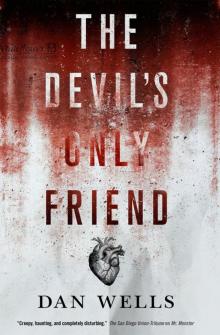 The Devil's Only Friend
The Devil's Only Friend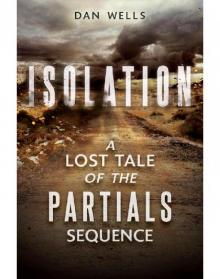 Isolation
Isolation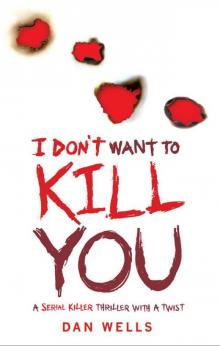 I Don't Want to Kill You
I Don't Want to Kill You Ones and Zeroes
Ones and Zeroes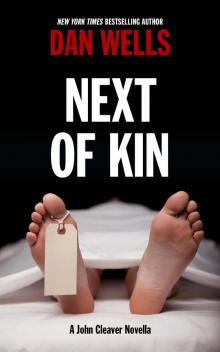 Next of Kin
Next of Kin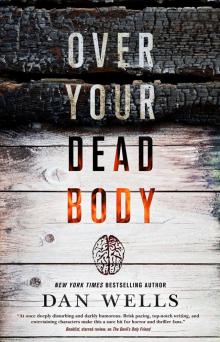 Over Your Dead Body
Over Your Dead Body Fragments
Fragments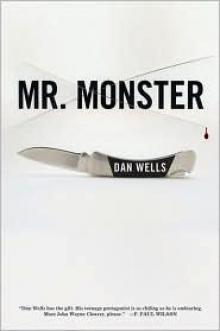 Mr. Monster
Mr. Monster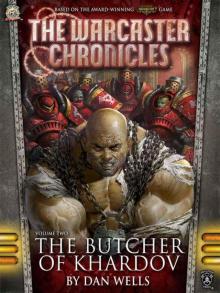 The Butcher of Khardov
The Butcher of Khardov I AM NO T A S E RI AL KI L L E R
I AM NO T A S E RI AL KI L L E R Nothing Left to Lose--A Novel
Nothing Left to Lose--A Novel Active Memory
Active Memory A Pear-Shaped Funeral
A Pear-Shaped Funeral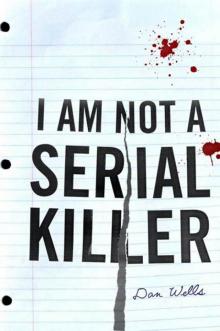 I Am Not a Serial Killer
I Am Not a Serial Killer Bluescreen
Bluescreen Ruins
Ruins Zero G
Zero G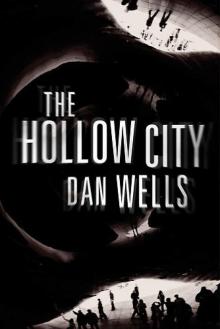 The Hollow City
The Hollow City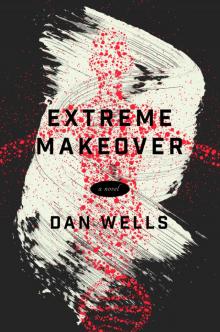 Extreme Makeover
Extreme Makeover Partials p-1
Partials p-1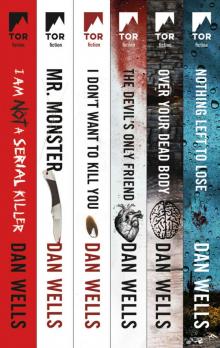 The Complete John Wayne Cleaver Series: I Am Not a Serial Killer, Mr. Monster, I Don't Want to Kill You, Devil's Only Friend, Over Your Dead Body, Nothing Left to Lose
The Complete John Wayne Cleaver Series: I Am Not a Serial Killer, Mr. Monster, I Don't Want to Kill You, Devil's Only Friend, Over Your Dead Body, Nothing Left to Lose